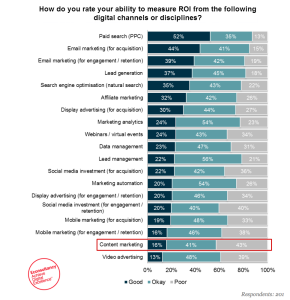— January 24, 2019
Basic keyword research plays a fundamental role in any marketing effort and should be the starting point when creating a new website for your business.
It should be noted that good keyword planning doesn’t exempt pursuing other forms of search engine optimization (SEO) or having a responsive website, but it does put you ahead in terms of adherence to the nuts and bolts of any marketing plan. It also prepares you to stay ahead of digital marketing trends.
By conducting proper research beforehand, you ensure only the right kind of visitors check into your website.
With the right information and tools at hand, you should be able to predict shifts in demand, respond promptly to changing market conditions, and adjust your product or services to reflect and feed the current vacuum in your market.

How Google Search is Changing
A study conducted in 2018 found 60 per cent of overall search volume came from mobile devices. This represents a dramatic shift from the year prior; whereby, now, more than half of all people are searching on their phones. That’s not the only change: in 2019, it’s expected voice search will rise, currently comprising 40 per cent of total search volume. This means there will be changes coming to Google’s search algorithms to facilitate changing search methods. By searching through voice, keyword strategy will have to accommodate words and phrases surrounding focus keywords. New strategies targeting, possibly, entire phrases including your focus search term may become normal procedure in the voice search space.
It’s too early to tell if including larger phrases into your keyword strategies will become more common. With the influence of voice search on the horizon, we may see keyword phrases beat out single keyword search terms. What we do know, however, is latent semantic indexing (LSI) keywords, surrounding your focus keyword, will help give Google’s search algorithms context. As machine learning becomes more advanced, context becomes crucial because it establishes the intent behind a user’s search. The LSI keywords you use assumes the job of pairing a user’s search intent with appropriate content. The more accurate your LSI keywords indicate the context of your content, the easier it is for Google to make sure your page gets paired to a user’s search query matching the same context of your content.
Latest Google Ranking Algorithm Update
There are between 500-600 Google search algorithm updates that occur each year. Only a few of these individual updates are notable and warrant attention.
We currently reside in Google Hummingbird. It’s the latest update of Google’s search algorithm, which debuted in 2013. With the Hummingbird update, search engine optimization changed its approach from analyzing single words in search queries to entire word groupings to construct meaning. This changed the algorithm from a high density word search engine to a context based search engine. Now, pages are ranked more accurately based upon the content they offer, rather than the amount of times they repeated the search term.
Satisfying User Search Intent
In SEO, we’re always looking to maximize reach and traffic to our website. What if we achieve those but still can’t increase dwell time or, even worse, increase conversions. Even though your searches are high, the case may be you’re not putting out relevant content that satisfies user intent.
In order to satisfy a user’s search intent, you have to know what information they’re looking for. Every time a query is made, there are three types of interpretations Google classifies: dominant, common and minor.
- Dominant interpretations are what most people intend to search when entering a query
- Common interpretations can have multiple interpretations
- Minor interpretations are less common interpretations (can be locally dependent)
Within these interpretations, there are categories of search intent which determine the type of results you will receive. Google calls this “Do – Know – Go.”
- Transactional (Do)
- Informational (Know)
- Navigational (Go)
The first category, “Do,” is a transactional category where searchers look to purchase or complete an action. This happens most frequently on mobile because people are on the go and looking to receive short and simple answers to help complete a purchase. With the increasing use of digital personal assistants, people can verbally command purchases through Google Home and Alexa assistants. The second category, “Know,” is an informational query. At this stage, users are looking for value through content to help inform them of a decision they will make later down the road. Even though, there’s no direct correlation between the quality of content a user receives and their immediate purchase intent, businesses understand the inherent value of good content. The last category, “Go,” is a navigational query, where users are looking to go to a specific web address.
Once you understand the intent behind a search, you can begin to hone your content into a category that helps to provide users with what they’re looking for.
Why You Need Latent Semantic Indexing
Because some words are homonyms, words with double meanings, you need satellite words to narrow down meaning of homonyms to one definition over the other. For example, the word “book” can be a noun; however, “book” can also be used as a verb to indicate making a reservation. If you work for a hotel company and want to buy the keyword “book,” you can face competition from publishers, retailers, and more. Unless you add LSI keywords to indicate your less common definition of “book” is different from another more common definition of “book,” you’re going to be fighting an uphill battle. It would be far better to use the keyword phrase “book your stay,”- with your focus keyword still being “book,” but adding LSI keywords “your stay.” This allows Google to understand the intention of this search is to make a reservation rather than to buy a book.
More examples of homonyms where LSI keywords can help:
- “Pen”
- “Terminal”
- “Left”
You get the idea…
It goes beyond just homonyms. Google also needs to parse through semantic content like abbreviations, parts of speech, and references. This is why adding LSI keywords identifying which of these groups your focus keyword belongs to is paramount.
Instead of looking for just your focus keyword as many times as it appears (keyword density), Google looks at other words on your web page to help give it context. By finding words relating your keyword to a certain context, Google can better identify the intent of your web page and help index it for search optimization. For example, your focus keyword is “apple.” Most of us know that could either reference the fruit or the famous tech company. Now, Google will look through your page to find words clarifying one of those two definitions. If Google searches your page and finds words like, “red delicious, granny smith, and baked apples,” it will index your page for searches based on “apple,” the fruit. The opposite would be true if it found words like, “iPad, iPhone, and laptop.”
LSI keywords are fantastic because they allow your pages to get searched for keyword variations based upon your primary keyword. Long gone are the days where you have to jam in as many of the same keyword as you can on a single page. LSI makes it far more important to produce quality content that is, above all else, accurate.
With that out of the way, let’s look at how a beginner can tackle keyword research.
Keyword Research for Beginners
Brainstorming Phase
Fulfill Search Intent
The first thing to consider before creating any kind of marketing content is its purpose. Now that you know what search intent categories exist, pick one and optimize content around it. For example, if you choose to do an informational blog topic, make sure you’re facilitating someone’s intent to learn by creating a topic they’re interested in learning about.
Run through some ideas you think would captivate your audience and, by process of elimination, choose the topics which resonate most. Begin to choose keywords which best correspond to your topics. Don’t worry, we’ll make adjustments to these in a second. Once you’ve completed your primary list of keywords, include sources from reputable and authoritative organizations, and you’re ready for the next step.
Search Volume & Clicks
Using the resources at the bottom of this post, begin researching the popularity of keywords on your niche topic. You’ll find keyword popularity is primarily sorted by search volume and clicks. Don’t be fooled by search volume, as it’s not the best metric for accurate traffic representation. Instead, take search volume and divide it by the number of clicks. This will give you the click-through-rate (CTR) of each keyword. By comparing CTR, you’ll have a better understanding of which keywords translate into traffic. The sources with high searches and low clicks could have a disconnect between user intention and satisfaction; therefore, try to identify if there are similarities between keywords with high CTRs. This is where you’ll find the best hints for your page keywords.
Competitor Research
Assess Competitor Pages
Look at your competition to see which keywords are working best for generating traffic to their pages. Compile the keywords and topics of their 10 best-performing pages to determine if they rank for keywords on topics you could similarly make to steal away traffic.
Content Gap Analysis
Perform a content gap analysis to understand which topics to focus on. Look at your competitors’ web pages bringing in the most traffic and determine which search intent category, keyword and topic corresponds to each page. Create a spreadsheet with these categories and filter them by their search intent category (do, know, go).
If you’re trying to bring in new customers through informative content, you can quickly see which keywords and topics are most popular for that category and optimize your content around them. You can then do the same for transactional and navigational categories.
Related Keywords
When you search the top 10 pages that rank for a keyword, you’ll see the common keywords or keyword phrases people use to rank. We’re going to ignore these words and phrases. Focus on the words that aren’t common in the top 10. These will be keywords that are related to common keywords. For example, here’s a list of top searches:
“website builder”
“ecommerce website”
“automated website builder”
“fast website builder”
“personal website”
In this example, we can see the word “website” and phrase “website builder” are common among top searches; however, the words surrounding this phrase are also important. Not only do they give them context, but they provide you with ammunition you can use to rank better. You can take words like “fast” and “personal” and include them in a new post you can later optimize for search.
Choosing Your Keywords
With the on-going debate over short and long-tail, it’s hard to know which type of keyword to choose. Keep reading to get a better idea:
Short-Tail Keyword
Head terms, also known as short-tail keywords are 1-2 word terms or phrases used for search. They comprise 30 per cent of all global search; however, they generate the most traffic.
These keywords get the highest amount of listings on Google and secure you the best chance of having your content viewed; although, they are by far the most competitive.
Medium-Tail Keyword
Medium-tail keywords are right in the middle. These keyword phrases typically consist of 3 words and can be great sources of traffic, if composed well. Three words gives enough flexibility to create unique keyword phrases applicable to certain niches. This will require experimentation.
Long-Tail Keyword
70 per cent of all global searches are long-tail searches, 4 word phrases or more, and these include hundreds of millions of searches every day when taken as a group. These types of searches often result in lower traffic volume but bring in higher quality traffic. Don’t confuse the two.
One lesson new search marketers need to learn is long-tail keywords often make better conversions than single word searches. For example, a person searching for “suits” or “shoes” is most likely browsing non-committal; on the other hand, a person searching for “best price Tom Ford navy blue suit” or something more specific like “best price Air Jordan size 12,” most likely has their credit card out.
Titles, Meta Data, & Headers
If you find your site isn’t receiving the kind of traffic it deserves, try optimizing titles tags, meta data, and headers.
By aligning your title tag more accurately to the content on the page, you can increase your chances to rank better. If there’s too much of a disconnect between your title and your content, say goodbye to page views. If you don’t rank well, try experimenting with new titles and measuring which one performs the best. Meta data doesn’t rank but is still a good way to help summarize what your page is about. H1 and H2 headers get ranked. Write your headers as if they are search terms. This will give them a higher probability to receive traffic. If you’re stuck, Google your heading, head down to the bottom of the search page to the “searches related to” section and see what is recommended in bold. Modify your header by incorporating a related term that is popular.
Bonus – alt-text is another way to drive traffic to your site. Fill out alt-text descriptions in order to create another avenue to receive traffic.
How to Judge Keyword Value
To understand how valuable a keyword is for your website, consider the following factors:
Does the keyword relate to the content on your website?
People should be able to find exactly what they’re looking for on your website if they were led there by the keyword. If the content on your site answers all their questions and offers a solution (hopefully in the form of financial transaction), you have a good working system.
Find out which of the major search engines rank you for your keyword
This will give you an idea of what it takes to make it to the first page. Also check for ads running along the top and right side of organic search results – it’s a good indicator of high-value keywords to steal.
If your website fails to rank well, you can buy test traffic to find out how well it converts
You can use Google AdWords and select “exact match,” so as to point traffic to a specific page on your website.
To get a clear picture, track impressions and their conversion rate over the course of about 300-500 clicks.
Having collected this data, try to determine how valuable each keyword is
Let’s assume, for example, you have a search ad that generated 5,000 impressions over the course of a single day. Of these five thousand, 100 unique visitors came to your site, and three converted for a total profit of $ 300.
This means that a single site visitor for that particular keyword is worth $ 3 to your business, and out of the 5,000 impressions your website could generate 18-36% click-through rate in 24 hours with a #1 ranking.
This would translate to about 900-1800 visitors per day with each of them worth $ 3, or between $ 1-2 million per year. Those are significant earnings in the long run. With a consistent growth pattern, there really isn’t any apparent limit to growth.
9 Beginner Resources for Keyword Research
Google AdWords is a common starting point for SEO keyword research, as it gives you an estimate of search volume in addition to predicting the actual cost of running paid campaigns for specific terms.
In order to predict your chances of success, it’s vital that you first understand the demand for a given search phrase and the effort required to achieve high rankings for it.
If you find that all the top ten results are from large established brands and you’re only starting out, the battle for high rankings can take years of effort and a considerable amount of money in paid marketing. Consider changing your strategy to win SEO battles with some of these beginner tools:
- Google Trends
- Wordtracker
- Google Keyword Planner
- Ahrefs Site Explorer
- Google Search Console
- Moz Link Explorer
- Google Correlate
- LSI Graph
- SEMrush
With a good understanding of keyword research, you will soon see your website gaining traction online. Remember, to get found by customers, you need not only a responsive website, but knowledge about what your potential customers are looking for as well.
Digital & Social Articles on Business 2 Community
(60)






